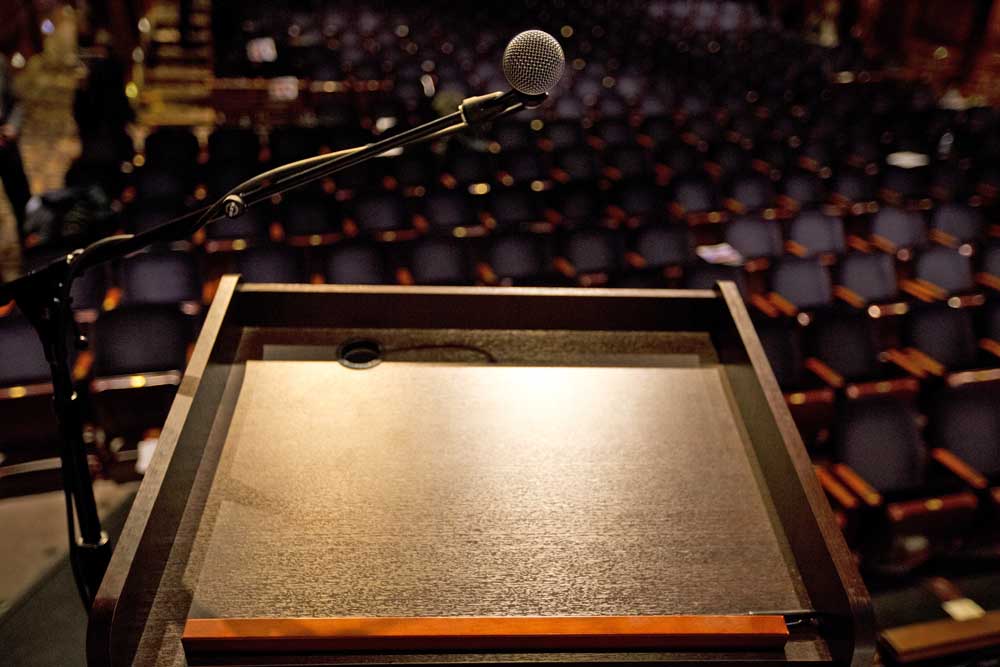Guest column: Wallowa’s trail of tears
Published 12:00 am Wednesday, July 4, 2018

- Guest Column
I recently returned from several days camping, hiking and fly-fishing in the Wallowa area of northeastern Oregon near the darling town of Joseph, the verdant Wallowa Valley and the magnificent Eagle Cap Wilderness. We Oregonians are quite fortunate to have an area so rich in natural beauty.
The region is also rich in history — a history that is both empowering and sorrowful. It is empowering when one appreciates the triumph of the pioneering spirit of the eastern settlers who braved extreme hardship during and after their journey west.
Unfortunately, the history of the West is also a sorrowful one when one considers how the U.S. government treated the indigenous Native Americans. When I was a kid in public school, I learned about the Manifest Destiny vision of taming the West evoked by a messianic call to occupy most of what was Indian land, legalized by the various homestead acts and treaties.
Only after that indoctrination, I came to appreciate that the migration west might better be described as “domestic imperialism” if one interprets the process as one of land stolen from the native inhabitants by eastern invaders who sought land, gold and other natural resources.
While in the Wallowas, I was reminded of Chief Joseph and the Wallowa band of Nez Perce and their valiant efforts to retain their ancestral home. Having lost their land as a consequence of a treaty swindle and after recognizing the futility of staying in the region, young Chief Joseph resorted to leading his band to the anticipated safety of Canada, where Chief Sitting Bull of the Lakota Sioux lived in exile with his own diaspora. Most Oregonians are familiar with the thousand-mile armed struggle of the Nez Perce led by Joseph over the period of four months in 1877 against the more-numerous and better-equipped U.S. Army.
The Nez Perce fought several heroic rearguard actions and engaged in successful ambushes against the cavalry until the Indians were eventually surrounded by three columns of soldiers converging on them a mere 40 miles from their Canadian refuge.
In the end, it was the telegraph that defeated Chief Joseph, an invention that allowed the Army to coordinate field operations. But in truth it was the 1850 Donation Land Claim Act, the Homestead Act of 1862 and the 1861 discovery of gold in Idaho Nez Perce territory that were responsible for the Indians’ demise. The cavalry was only an instrument of their destruction.
Today there are not many people living in the Wallowa Valley. How empty and pristine it must have been 150 years ago. Hadn’t there been enough room for both races to thrive? Any argument for peaceful co-existence made by compassionate settlers was certainly trumped by national security concerns of the day and by a manifest destiny fueled by greed and racism against the “red man.”
That convenient racism resulted in the creation of relocation camps — the Indian reservations. Children were often taken from their families in order to Christianize them and further destroy Native American culture.
But the late 1800s wouldn’t be the last time our government separated families and interned undesirables whose skin colors were not appreciated. FDR did it to Japanese-Americans in 1942, also in the name of national security.
Now in 2018, persecution of “the other” is directed against Muslims and refugees from Central America even to the extent of separating children from families who legally seek asylum at our borders.
In the name of national security, refugees are wrongly characterized as criminals and imprisoned instead of being protected by our Constitution and international law. Would we fear them so if they had whiter skin or were coming here from Norway rather than Guatemala?
Certainly, U.S. history is bittersweet, much like the histories of many other Western cultures. But haven’t we learned anything from history? Isn’t there room in our hearts for compassion, or are we condemned to repeat the mistakes of the past?
— Roger A. Sabbadini lives in Bend and is emeritus distinguished professor of biology and co-founder of the Institute for International Security and Conflict Resolution at San Diego State University. He is also a senior research scholar for the Department of Anesthesiology, Perioperative and Pain Medicine at Stanford University.






